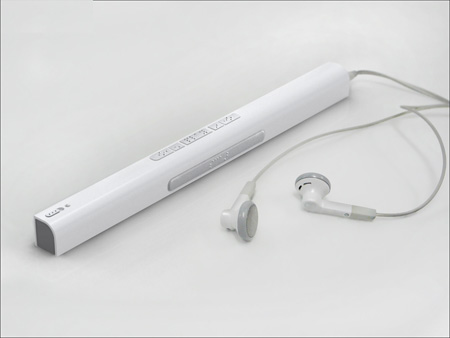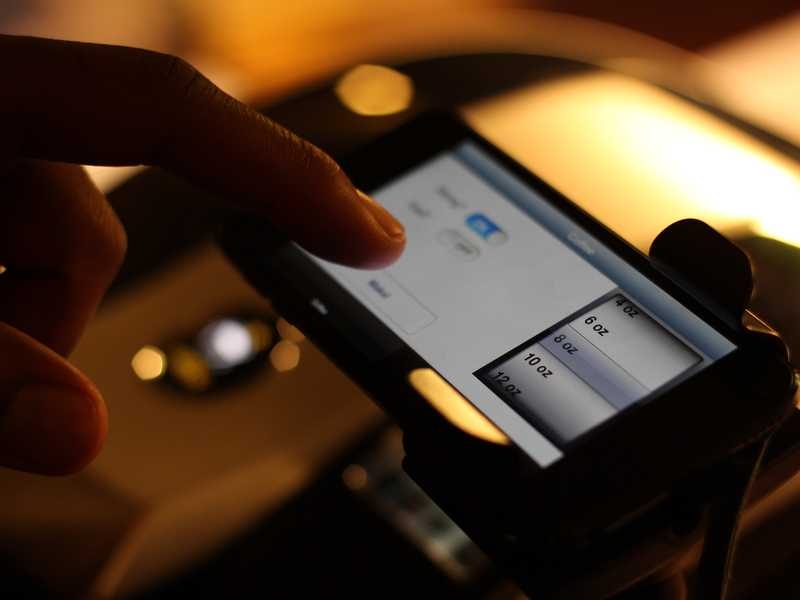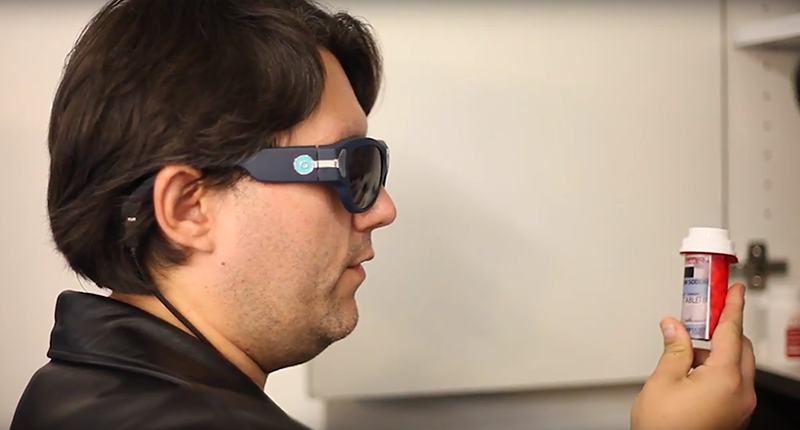Mobility Aids for Visually Impaired Users: Improving Autonomy
Mobility Aids for Visually Impaired Users: Improving Autonomy
Blog Article
Discover Cutting-edge Tools Designed for the Aesthetically Damaged
The growth of cutting-edge tools for the aesthetically impaired represents a substantial innovation in availability and independence. Technologies such as smart glasses with AI capacities and mobile applications created to offer acoustic descriptions are reshaping daily experiences for users. In addition, wearable tools that employ haptic feedback boost ecological awareness, while contemporary Braille advancements provide new means to involve with message. As these tools remain to develop, their influence on the lives of those with aesthetic problems raises vital inquiries regarding the future of inclusivity and freedom in various facets of life. What exists ahead in this technical landscape?
Smart Glasses for Navigation

Smart glasses designed for navigating are revolutionizing the method aesthetically impaired people connect with their atmosphere. These innovative devices utilize a combination of electronic camera innovation, fabricated knowledge, and acoustic responses to give real-time information concerning environments. By utilizing challenge detection systems, wise glasses can notify customers to potential threats, making it possible for more secure mobility in both acquainted and unfamiliar settings.
The assimilation of GPS technology additionally boosts navigation capacities, allowing users to obtain acoustic instructions as they relocate. This hands-free strategy not only fosters independence however additionally empowers aesthetically damaged individuals to browse urban landscapes with enhanced confidence. Additionally, several wise glasses are outfitted with attributes that determine spots and road signs, supplying contextual info that boosts the individual experience.
In addition, the development of these devices is continually advancing, with companies functioning to boost the precision of things recognition and broaden the series of navigational features. As clever glasses become extra available and budget friendly, they hold the prospective to substantially transform life for aesthetically impaired customers. Ultimately, these cutting-edge tools stand for a vital action toward inclusivity, offering enhanced movement and a greater sense of autonomy for people navigating the globe around them.

Mobile Apps for Daily Living
Just how can mobile applications boost the lives of visually damaged people? Mobile applications are changing the means aesthetically impaired individuals browse their environments, handle everyday jobs, and gain access to information. These applications offer essential support via various capabilities, promoting independence and improving lifestyle.
Several innovative mobile applications are developed particularly for everyday living. For instance, applications like Be My Eyes link aesthetically impaired individuals with sighted volunteers using video clip telephone calls, enabling them to obtain real-time support with jobs such as reviewing labels or navigating unfamiliar areas. In A Similar Way, Seeing AI, created by Microsoft, makes use of expert system to explain surroundings, checked out text, and recognize things, properly changing a smartphone into an effective tool for day-to-day help.
In addition, navigating applications tailored for the aesthetically damaged, such as Aira and BlindSquare, offer audio-based instructions and environmental details, enabling users to traverse their environments safely and with confidence. Past navigating and prompt aid, mobile applications additionally support organization and job administration, with features that help customers establish reminders, produce to-do checklists, and track visits. In recap, mobile applications act as indispensable sources, empowering aesthetically damaged individuals to lead even more independent and meeting lives.
Wearable Technologies for Assistance
Empowerment through innovation is increasingly apparent in the realm of wearable devices designed to help aesthetically damaged people. These cutting-edge tools integrate effortlessly into day-to-day live, improving navigating and giving important feedback to users. Smart glasses equipped with cams can acknowledge faces and check out message aloud, permitting users to communicate even more confidently in professional and social setups.
One more noteworthy advancement is the usage of haptic responses systems in wearable gadgets. These systems utilize resonances or various other tactile signals to communicate information concerning the individual's environment, such as challenges or adjustments in surface, improving flexibility and security. Wearable modern technologies likewise consist of wristbands that link to smartphones, signaling individuals to notices through refined resonances, thus boosting connectivity without reliance on aesthetic cues.
As these innovations remain to develop, they are not only boosting independence for visually impaired people however also cultivating a higher feeling of inclusion in society. By bridging the void between obstacles encountered in everyday living and the potential for freedom, wearable technologies function as pivotal tools in the quest for equal rights and empowerment for those with aesthetic disabilities.
Audio Description Devices
Audio summary tools play an important duty in enhancing access for visually damaged individuals, offering them with the ability to engage with visual media. Voice-activated assistive devices. These devices supply narrated summaries of crucial aesthetic components in movies, television programs, and live efficiencies, making certain that users can fully comprehend the context and emotions shared through visuals
Sound description can be incorporated into various platforms, including streaming solutions, movie theater testings, and live movie theater. Many popular streaming services now consist of audio description as an ease of access attribute, allowing visitors to select it quickly. Along with mainstream Mobility aids for visually impaired users media, specialized applications also exist, offering audio descriptions for art exhibits, galleries, and other cultural events.
The performance of audio description pivots on the ability of the narrators, that need to convey visual details succinctly without taking away from the initial audio. Innovations in this area are likewise leading the way for more personalized experiences, where individuals can readjust the degree of information and pacing according to their choices.
Braille Innovations and Tools
Braille devices and advancements have actually considerably changed the method aesthetically damaged individuals interact with text and details. Modern improvements have actually caused the growth of functional devices that improve literacy and self-reliance amongst users. Significantly, Braille display innovations have actually evolved, enabling dynamic reading experiences. These gadgets transform electronic message right into Braille, making it possible for individuals to access a large array of info on computers, tablet computers, and mobile phones.
Moreover, mobile Braille notetakers incorporate conventional Braille input with modern-day performances, promoting note-taking, organizing, and file editing on the move. OCR devices for the blind. These portable gadgets commonly feature text-to-speech capacities, bridging the gap in between Braille and auditory info
On top of that, innovative Braille printers have arised, allowing users to generate Braille labels, records, and educational materials successfully. This availability cultivates better participation in professional and educational environments, eventually advertising inclusivity.
In addition, research right into smart Braille technologies remains to expand. Tools that incorporate fabricated knowledge are being discovered to provide real-time navigation support and contextual details, boosting the user experience in varied setups. In general, these innovations mirror a dedication to encouraging aesthetically impaired people with modern technology, guaranteeing they can easily gain access to and involve with the world around them.

Final Thought
The innovation of innovative tools for the visually impaired considerably improves self-reliance and lifestyle. Smart glasses, mobile applications, wearable modern technologies, audio summary tools, and Braille developments jointly encourage people by offering necessary navigating aid, environmental recognition, and boosted analysis experiences. These innovations not just foster higher inclusion but additionally promote autonomy in daily activities, eventually adding to an extra fair and accessible society for aesthetically impaired individuals. Proceeded advancement in this area holds guarantee for additional enhancements.
As smart glasses become more obtainable and cost effective, they hold the potential to dramatically transform day-to-day life for aesthetically damaged users. Mobile applications are revolutionizing the method aesthetically impaired customers navigate their environments, manage daily jobs, and accessibility info. Applications like Be My Eyes attach aesthetically damaged individuals with sighted volunteers by means of video phone calls, permitting them to obtain real-time support with jobs such as checking out labels or navigating unfamiliar spaces.In addition, navigation applications customized for the aesthetically damaged, such as Aira and BlindSquare, supply audio-based directions and ecological details, making it possible for individuals to traverse their environments securely and confidently.The improvement of innovative devices for the visually impaired dramatically improves self-reliance and quality of life.
Report this page